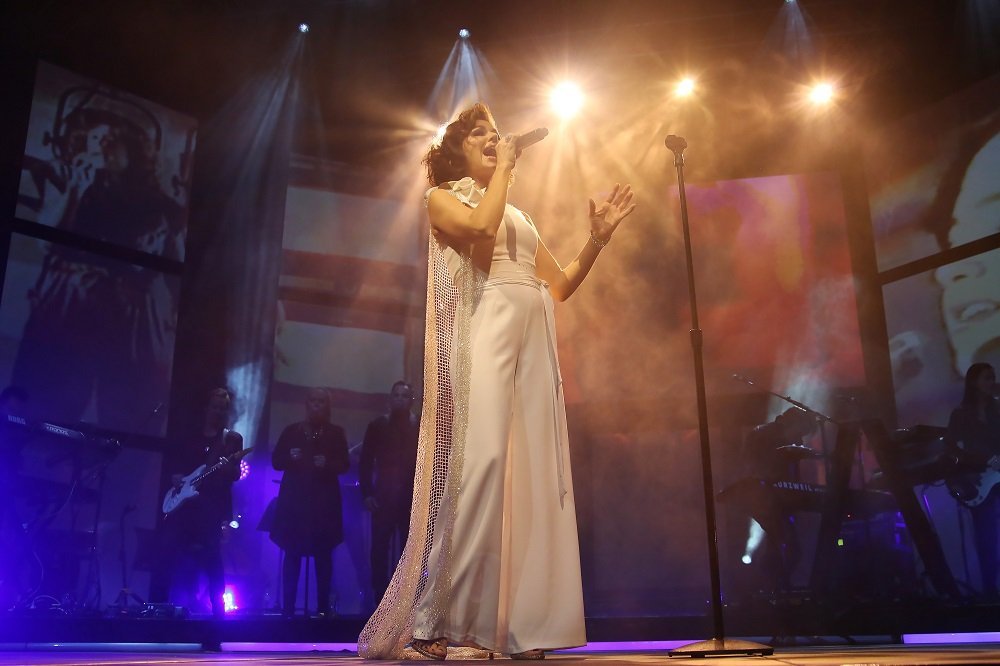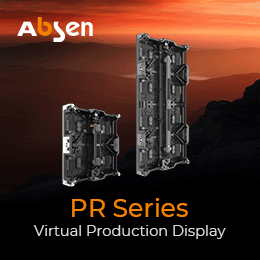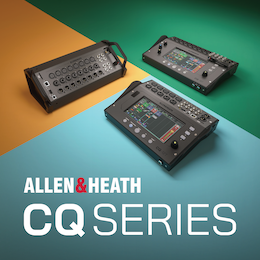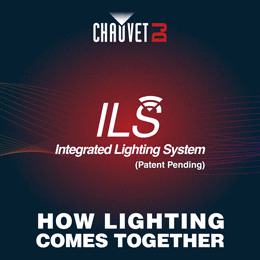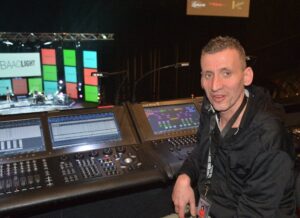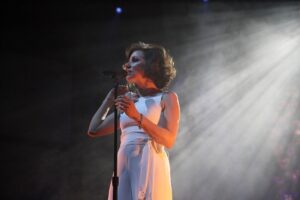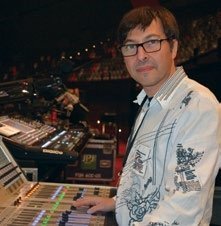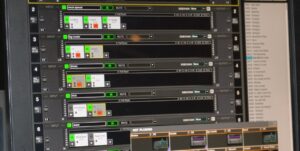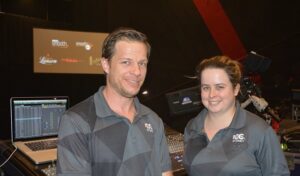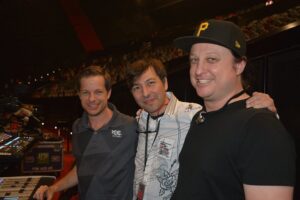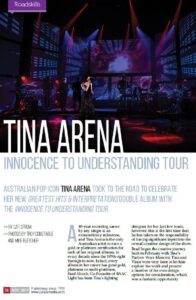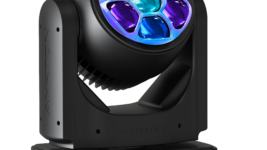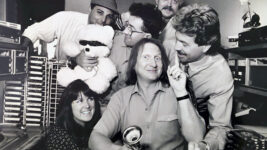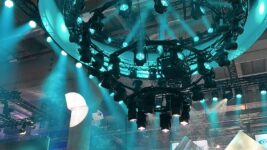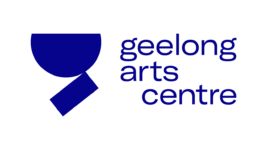Subscribe to CX E-News
ROADSKILLS
Australian pop icon Tina Arena took to the road to celebrate her new greatest hits and interpretations double album with the Innocence to Understanding Tour
By Cat Strom.
Photos by Troy Constable and Mike Fletcher.
A 40-year recording career by any singer is an extraordinary milestone, and Tina Arena is the only Australian artist to earn a gold or platinum certification for each of her original albums, in every decade since the 1970s right through to now. In fact, every album in her career has gone gold, platinum or multi-platinum. Brad Alcock, Co-Founder of BAAC Light has been Tina’s lighting designer for her last few tours, however, this is the first time that he has taken on the responsibility of having significant input into the overall creative design of the show.
Brad began the creative journey back in February with Tina’s Partner Vince Mancini. Tina and Vince were very keen to let him explore the work and present a number of his own design options for consideration, which was a fantastic opportunity for Brad to use the BAAC Lighting Visualisation Studio to conceptualise his ideas in real-time.
“The show is a lot less rock’n’roll and much more theatrical – heading in a classy direction,” remarked Brad. “Consequently, my design utilises a much smaller number of moving light fixtures than I would normally incorporate, rather, the visual emphasis is on the 22 projection panels that define the performance space and are the main design element of the show”.
In fact, the show was a masterpiece in video and lighting integration, with the show design evolving from the idea of the projection panels encompassing the whole space. There were many times when the lighting became an element of the projected surfaces which meant that when the lighting wasn’t, the projection really popped.
The configuration of the panels in the 6,000 seat ICC Theatre Sydney was arranged slightly wider than Brad’s original design which was optimized for the smaller 2,000 seat venues that the rest of the tour played at.
“This room is not ideal for us, but the design still works and most importantly, the story still comes across,” said Brad. “At the end of the day, the show is not about lighting and projection … it’s about Tina and as long as we can see her and the band, the design is dynamic enough to allow us to get away with a fair bit!”
One of the challenges of the tour and Brad’s design, was the need for it to change for each venue played on the tour given the wide range of stage sizes and trim heights encountered.
“It’s the first touring rock’n’roll show that I’ve done where I have placed the emphasis on projection as the core visual element of the show and this had it challenges,” commented Brad. “It required me and my team to ensure that we toured a full complement of lenses to ensure that we were able to respond to any change in the projection design at any venue.
“Traditionally, shows of this size and type would tour with LED panels, however, one of the design constraints that we had to overcome was to deliver a visual solution that was exceptionally fast to install at each venue.”
As such, efficiency became key for Brad and his team of just two touring technicians who were responsible for both the lighting and projection elements of the production. Rather than touring over 80 square meters of LED panels and an entire additional crew, the projection surfaces were constructed of lightweight aluminium frames with white core-flute surfaces.
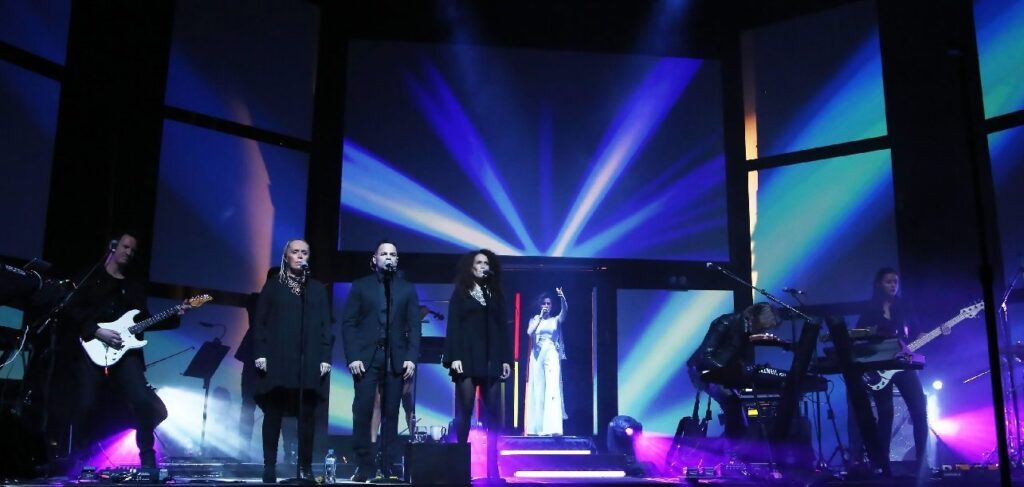 “Most of my time in the show is spent ensuring the lighting balances the projection but most importantly making sure Tina is never compromised in either light that is too strong or not flattering,” added Brad.
“Most of my time in the show is spent ensuring the lighting balances the projection but most importantly making sure Tina is never compromised in either light that is too strong or not flattering,” added Brad.
Brad and one of BAAC Light’s content creators Mike Fletcher created most of the content along with Tina’s partner Vince Mancini and Mike Westbrooke and using a broad team of content artists ensured the show didn’t have the same feel all the way through.
“This was very important to me as I needed the show to reflect the story behind Tina’s songs, both acknowledging her past, but also making a statement about her future,” said Brad. “Further, it was important to ensure that I met the brief of her creative team’s desire to emphasise Tina’s position as a contemporary artist.”
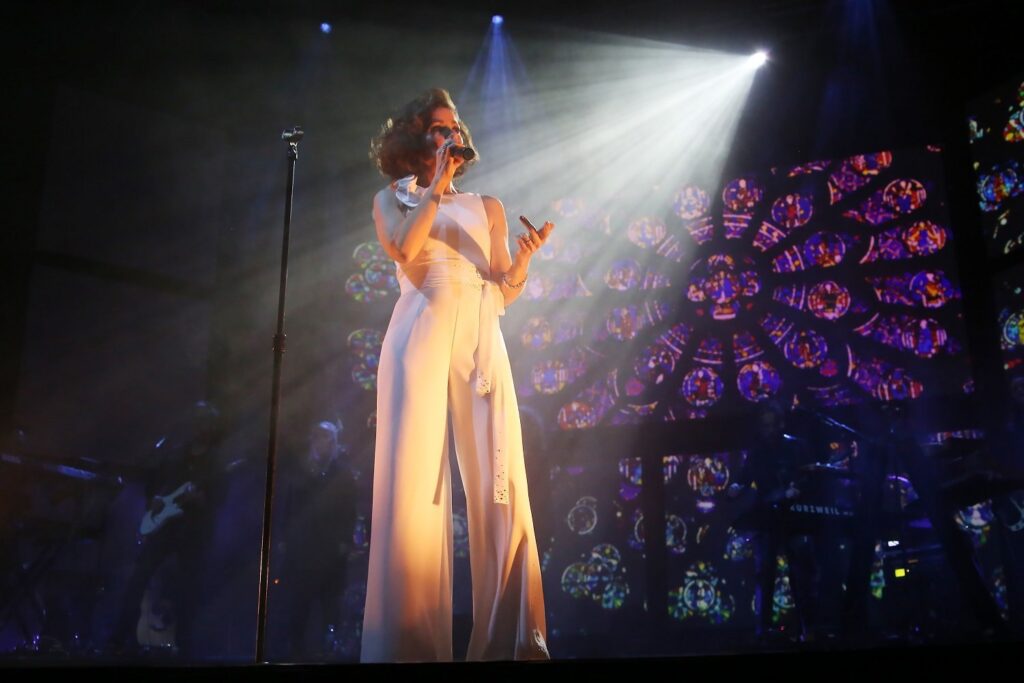 As a Lighting Designer, Brad is in the unique position of having his own warehouse full of BAAC Light’s lighting and projection equipment that is used exclusively for his designs. “I am extremely fortunate to be able to pick and choose the fixtures I will use for each design from my own inventory,” Brad commented. “The entire lighting and projection system was supplied by BAAC Light for the tour: 3 x Panasonic Projectors, 51 x Moving Lights (a mix of spot, wash and beam), a large number of mole-fays and profiles and even a few dozen happy tubes to deliver a retro 90’s look.
As a Lighting Designer, Brad is in the unique position of having his own warehouse full of BAAC Light’s lighting and projection equipment that is used exclusively for his designs. “I am extremely fortunate to be able to pick and choose the fixtures I will use for each design from my own inventory,” Brad commented. “The entire lighting and projection system was supplied by BAAC Light for the tour: 3 x Panasonic Projectors, 51 x Moving Lights (a mix of spot, wash and beam), a large number of mole-fays and profiles and even a few dozen happy tubes to deliver a retro 90’s look.
“Using our own lights is easier for me as I know what each can and can’t do. Again the show is a story through projection so I didn’t need a huge fixture count. The majority of the rig is discharge and I never run any LED fixtures that hit Tina over 12% in order to ensure no chance of oversaturation.”
For Media Servers, Brad decided to run ArKaos due to its speed of mapping the panels in each venue.
“One technician with a remotely interfaced laptop was able to fully map the entire projection system in under fifteen minutes in each venue,” commented Brad. “Choosing the right tool for the job is important to me and one
of the great things about BAAC Light’s media server fleet is that as a designer, you can just select which of the six different media server software packages we run, you want to be slotted into your main and backup servers. All servers are custom built in-house and for Tina we also fed multiple live camera feeds which were subsequently treated with real-time effects.”
Although Brad insists he is not a Console Queen, he does prefer a Hog4 Full Boar with a full tracking backup console for control. “I don’t consider consoles to be an important part of the journey – it’s just another tool I use to deliver a design. I am fast and efficient on that console and most importantly, I don’t have to look down at it very often, thus ensuring my eyes are not distracted from the important things on stage.
“Technically, it’s not a particularly complicated show, I run a single cuelist of 390 cues for the show which include both vision and lighting. On top of that, I call follow spots and I also have a few busking faders in there as well for extra bumps and effects to respond to the audience’s reactions. The great thing with Tina is that she’ll always find the light for you and will always play to the light.”
AUDIO
FOH engineer Danny Olesh was tempted onto the road away from his usually occupation designing sound consoles,
and although the show was complicated with many channels and schedules were tight, he was clearly in his element.
FOH, microphones and monitors were toured and supplied by JPJ Audio, with ‘stacks and racks’ picked up locally or in house. Danny chose a Soundcraft Vi6 console for the simple reason that he enjoys the sound of the preamps and it has real hardware Lexicon processors built in which lends itself very well to the kind of vocal production the show required.
“They really add to the reverb quality that Tina’s voice requires,” he added. “I’m running close to 30 plugins which run from the Vi6 optical MADI output via Digigrid MGO into a Waves server running Soundgrid with certain processors that run on Tina’s vocals. The vocals come in one channel and go directly out to a set of plugins which is a chain containing C6-Vitamin-Vocal rider (side-chained to a band subgroup) and a De-esser. This then gets returned to the console and then out again through a group that does a stereo spread on her vocal – Doubler, Vitamin, S1, De-esser.”
Side chaining is happening through a plugin called F6 with the bass and the kick; when there’s a kick the bass doesn’t happen at the same time in the low end frequencies which cleans up the bottom end.
Drum group runs through a C6 and F6 just to contain the large variance in dynamics of the show. Band group runs via an F6 with the midrange side-chained to Tina vocal group, this gives space in the vocal midrange area when you have twenty other instruments playing at the same time.
There are a few other little tricks to change the drum sound between songs (SSL and Transient control) with the live strings and backing string group via a C4 and Vitamin.
“We were lucky to have a few days of rehearsals where I could set up several cues on the system,” said Danny. “It’s a very interesting show with a lot of light and shade in it.”
Danny also chose the Soundcraft Vi6 due to the amount of faders it offered him, allowing him to get to channels quickly when he is doing 63 channels off the stage plus all the return groups, totaling around 80 channels – as well as having built in compression and 31band graphics as well as 4 band parametric already present on every output
(group and matrix) without having to spend time assigning processing to them.
“It makes it easier to get to quickly when you don’t have the same rig at every show plus there are a lot of changes between songs, depending on the room,” he said. “I think the d&b PA here at the ICC is very good and they did a great job. It seems to be pretty equal as far as the sound goes between the bottom and top, left to right of the venue.”
The in house d&b system comprised of sixteen V-Series for the main hang left and right, ten hangs of V-Series for the outfills, sixteen flown Vsubs and on the floor four Y-Series for the drum front fill and four Vsubs on the floor for front fill. There were V-Series delays for the last four rows of the highest seating.
The venue’s DiGiCo D10 was used for control getting AES feeds from the Vi6. A left and right PA matrix feeds into AES 1 and 2 goes to the DiGiCo, and that feeds the left and right hangs. Top subs, ground subs, floor fills and delays all run off matrixes into AES and through the console processors to the DA80 amplifiers. It was digital all the way through to the amps with no conversion required.
“When we first opened, a lot of acts were bringing in their own PA systems but now we’re about 50/50,” said Ryan Hazell of the ICC’s audio department. “It takes time to build confidence in a new venue, its sounding good now. We’ve had a bit of time to fine tune it with the R1 software and the more shows come through here, the more we’ll win the confidence of people.”
JPJ’s Jarrod Mitchell took care of the RF plot, travelling with 24 channels of RF and using WiNRADiO to scan the area and Workbench to calculate the frequencies. Ricky Ray used a DiGiCoSD10 for monitors (Shure PSM 1000 IEMs) with an analogue split between the SD10 rack and the Soundcraft rack, which is a nice redundant system to have so if something did go they can use either or to do the job.
This article first appeared in the print edition of CX Magazine November 2017, pp.36-42.
CX Magazine is Australia and New Zealand’s only publication dedicated to entertainment technology news and issues since 1991. Read all editions for free or search our archive for stories, people, tech-tips, products and production reviews www.cxnetwork.com.au
Photos: Troy Constable and Mike Fletcher. All text and photos © CX Media
Subscribe
Published monthly since 1991, our famous AV industry magazine is free for download or pay for print. Subscribers also receive CX News, our free weekly email with the latest industry news and jobs.


